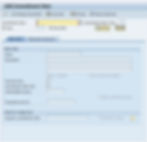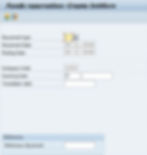
In today’s fast-paced world, managing finances effectively is crucial for any organization. Imagine a project with a fixed budget but no clear way to track spending. Without a solid system, overspending or running out of funds could put the project at risk. This is a common challenge for organizations, whether they are non-profits or large corporations.
Take ABC Corporation, for example, which has an annual budget of $1 million. The company needs to allocate this budget across various departments like Marketing, HR, and IT. Without a method to track expenses, planned costs, and remaining funds, managing this budget could become chaotic.
This is where SAP Fund Management (FM) comes into play. It enables organizations like ABC Corporation to monitor their spending, track future costs, and ensure they stay within their budget. By doing so, SAP FM helps companies avoid financial surprises and ensures they meet their goals without the risk of overspending.
What is Fund Management in SAP?
SAP Fund Management (FM) helps organizations control and track their budgets, commitments (future planned expenses), and actual expenditures. It integrates with SAP Financial Accounting (FI), offering a comprehensive view of how funds are being utilized while ensuring compliance with both internal and regulatory financial policies.

Key Components of SAP Fund Management
SAP FM includes several key components that enable organizations to manage their financial resources efficiently:
Fund Management Area
This is the unit used to manage funds within the system.
Funds Centers
These are organizational units (such as departments or projects) that manage budgets and control how funds are spent.
Commitment Items
Categories of income or expenses (e.g., salaries, travel costs), linked to GL accounts in FI for accurate tracking.
Budgeting
This involves allocating and managing budgets for various funds centers and commitment items to ensure financial discipline.
Funds
Defines the category of expenditure, such as CAPEX (Capital Expenditure) or OPEX (Operational Expenditure).
Commitment Management
Tracks planned spending, like purchase orders, and reserves funds before actual expenses are incurred.
Availability Control
Monitors budgets in real time and prevents overspending by triggering warnings or blocks when thresholds are reached.
Reporting
Provides comprehensive reports that track budget usage, commitments, and variances, offering financial transparency.
Scenario: Green City's Fund Management Process
Let’s explore how Green City uses SAP FM to manage its budget:
Budget Planning:
At the start of the fiscal year, the Finance Department allocates the city’s budget across different departments, such as $1,000,000 for Road Repairs, $500,000 for Healthcare, and $200,000 for Public Events. These budgets are entered into SAP FM.
Fund Commitment:
The Road Repairs Department requests $50,000 for materials for a new project. They create a fund commitment in SAP FM, which earmarks the money, but no actual spending occurs yet.
Release Funds:
Once materials are purchased, the Road Repairs Department requests the release of the funds. SAP FM verifies that the budget has enough available funds. If approved, the $50,000 is released.
Invoice Processing:
The vendor submits an invoice for $50,000. The Accounts Payable team processes this invoice in SAP, posting the transaction to Financial Accounting (FI). SAP FM ensures that the expense is debited from the Road Repairs budget, tracking fund usage.
Monitoring and Control:
Throughout the year, SAP FM enables the Finance Department to track fund usage in real time. If the Road Repairs Department requests additional funds, SAP FM checks if there’s sufficient budget remaining. If the budget is exceeded, the system triggers an alert and prevents further spending unless approved.
End-of-Year Review:
At the end of the fiscal year, SAP FM generates reports showing how much was allocated, committed, and spent across all departments. The finance team uses this data to plan next year’s budget and assess how effectively funds were utilized.
Steps for Fund Center Allocation in SAP

Here are the basic steps for setting up Fund Center allocations in SAP FM:
Define Fund Center
Purpose: A Fund Center is a critical element for managing and controlling funds in the system.
Tcode: FMSA
Action: Create Fund Centers for different departments or projects.

Define Commitment Items
Purpose: Commitment Items categorize expenditures and revenues within Fund Centers.
Tcode: FMCIA
Action: Create Commitment Items to track financial commitments.

Define Funds Management Area
Purpose: A Funds Management Area is used to manage funds.
Tcode: OF14
Action: Assign Fund Centers and Commitment Items to the Funds Management Area.

Assign Fund Centers to Funds Management Area
Purpose: Allocate Fund Centers to the Funds Management Area to enable fund tracking.
Tcode: FMX1
Action: Link Fund Centers to the Funds Management Area.

Define Budgeting and Budget Period
Purpose: Set up the budget and allocate it for specified periods.
Tcode: FMBBC
Action: Define the budget period and assign it to relevant Fund Centers

Post Commitments
Purpose: Record and manage commitments for Fund Centers.
Tcode: FMBB (for budgeting) or FMFG (for purchasing commitments)
Action: Post commitments through the relevant transaction codes.
Release Funds
Purpose: After the commitment has been made, funds need to be released for actual spending when invoices are received or expenses occur.
Tcode: FMX2 (for changing commitments), FMFG (to process purchasing commitments)
Action: Once the goods or services are delivered, request the release of funds from the committed pool. SAP FM verifies the availability of funds and processes the release of the earmarked budget for the expense.
Monitor Funds
Purpose: Ensure funds are available and monitor spending to avoid exceeding budgets.
Tcode: FMAVCR01
Action: Use transaction codes like FMAVCR01 to track budget availability and spending.
Reporting
Purpose: Generate reports for tracking Fund Center allocations and usage.
Tcode: FMRP_RW_BUDCON (Budget Consumption Report)
Action: Displays the status of consumption of budget in all funds centers, including actual expenses and commitments.
Conclusion
SAP Fund Management offers a robust framework for organizations to manage their financial resources efficiently. By following the steps outlined above, organizations can allocate budgets, track commitments, monitor spending, and generate reports to ensure fiscal discipline. This systematic approach helps organizations avoid overspending, maintain transparency, and stay on track with their financial goals.
By setting up SAP FM properly and leveraging its powerful features, you can ensure your organization uses its resources wisely and effectively, aligning financial activities with strategic goals.
Disclaimers: This blog content is for informational purposes and does not replace professional advice, which helps protect your business legally.



















